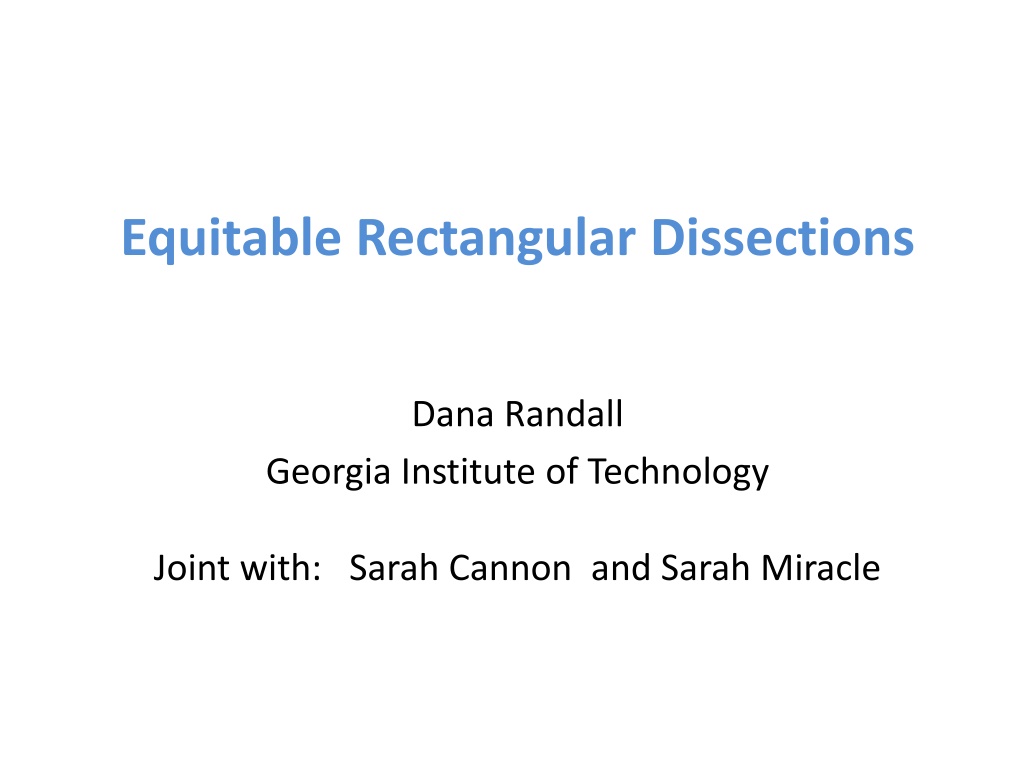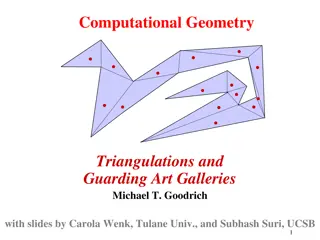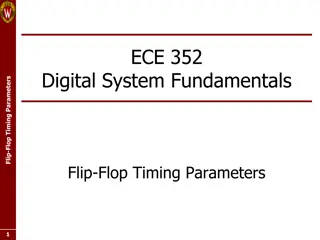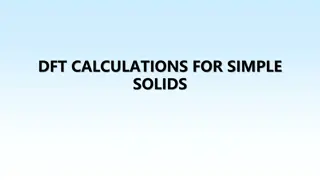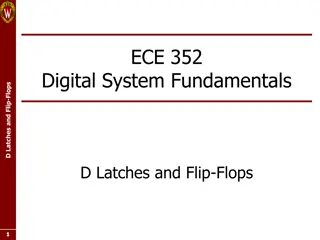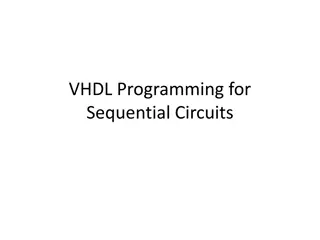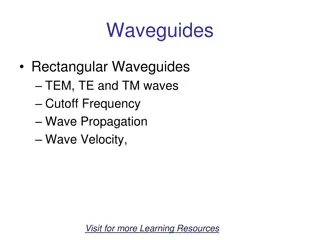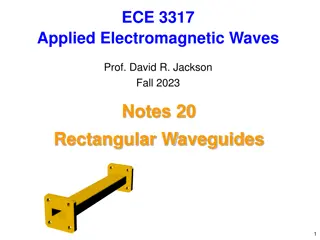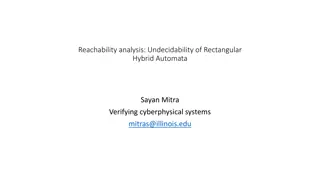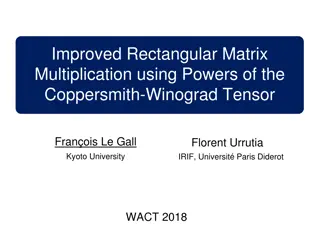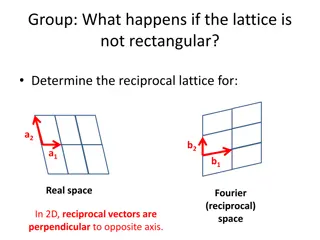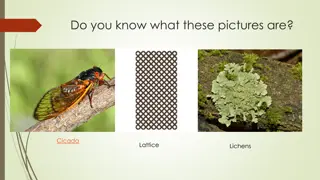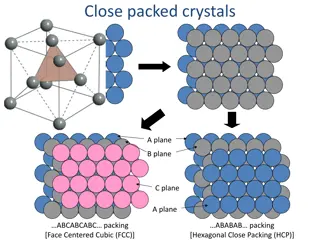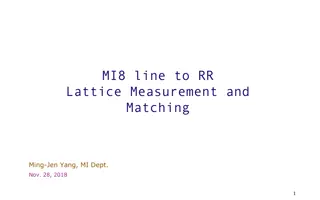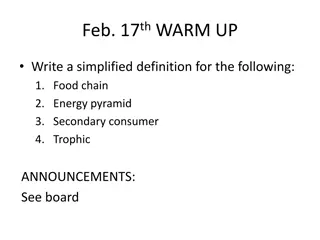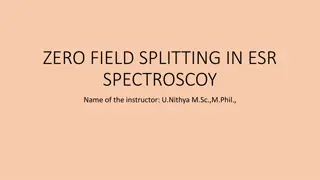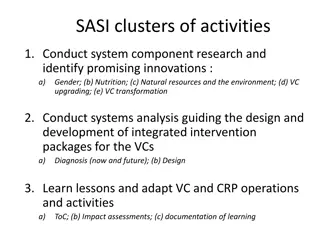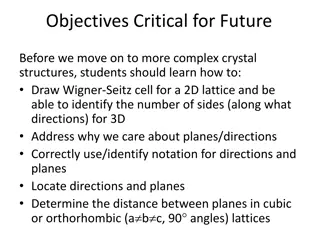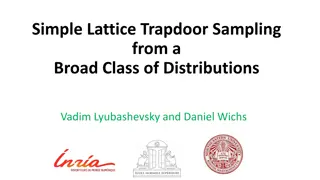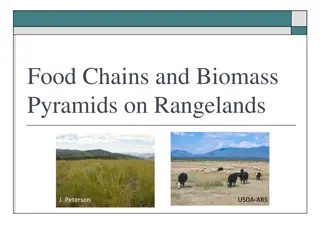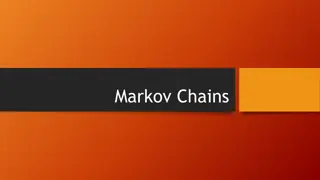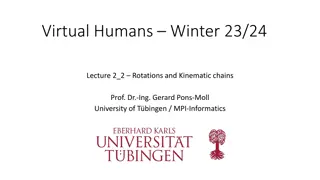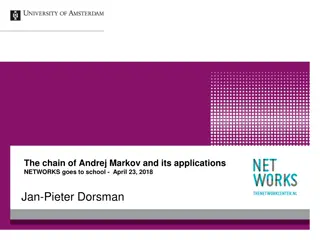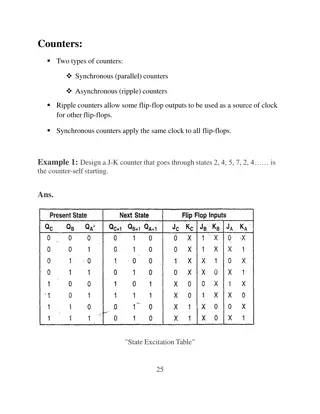Rectangular Dissections and Edge-Flip Chains in Lattice Triangulations
Explore equitable rectangular dissections and their applications in VLSI layout, graph mapping, and combinatorial problems in this scholarly work by Dana Randall from Georgia Institute of Technology. Discover the concept of partitioning an n x n lattice region into n2/a rectangles or areas where corners lie on lattice points, and delve into the intriguing Edge-Flip Chain dynamics, questioning its connectivity and mixing properties. Related tiling problems and weighted triangulations are also discussed in this insightful study.
- Rectangular Dissections
- Edge-Flip Chains
- Lattice Triangulations
- Equitable Partitioning
- Combinatorial Applications
Download Presentation

Please find below an Image/Link to download the presentation.
The content on the website is provided AS IS for your information and personal use only. It may not be sold, licensed, or shared on other websites without obtaining consent from the author. Download presentation by click this link. If you encounter any issues during the download, it is possible that the publisher has removed the file from their server.
E N D
Presentation Transcript
Equitable Rectangular Dissections Dana Randall Georgia Institute of Technology Joint with: Sarah Cannon and Sarah Miracle
Rectangular Dissections Equitable Rectangular Dissection: A partition of an n x n lattice region into n2/a rectangles or area a whose corners lie on lattice points. Rectangular dissections arise in: VLSI layout Mapping graphs for floor layouts Combinatorial applications
Rectangular Dissections Partition n x nlattice region into rectangles such that: There are n2/a rectangles each with area a The corners of rectangles lie on lattice points The Edge-Flip Chain Repeat: 1. Pick an random edge e, 2. Flip edge e with prob. , if possible. Main Questions: Does the Edge-Flip Chain connect the set of rectangular dissections? (Note: need n=2k) Is it rapidly mixing?
Related Tiling Problems / Flip Chains Domino Tilings Lozenge Tilings Polynomial time mixing [Luby, R. Sinclair] [R., Tetali] Fortresses: PMs on square-oct lattice Lattice Triangulations ? ?
Background: Lattice Triangulations Another Edge-Flip Chain: Triangulations of general point sets: Open Triangulations of point sets in convex position: Fast [McShine, Tetali 98], [Molloy, Reed, Steiger 98] Triangulations on subsets of Z2: Open Weighted Triangulations on subsets of Z2 [Caputo, Martinelli, Sinclair, Stauffer 13]
Background: Weighted Triangulations [Caputo, Martinelli, Sinclair, Stauffer 13] Weight ( ) = (totallength of edges) The Edge-Flip chain: Results [CMSS]:
Weighted Rectangular Dissections let weight ( ) = (totallength of edges). Given > 0, The Weighted Edge-Flip Chain Repeat: 1. Pick a random edge e. 2. If e is flippable, let e be the new edge it can be flipped to. 3. Flip edge e with probability min ( 1, (|e |-|e|) ).
Weighted Rectangular Dissections let weight ( ) = (totallength of edges). Given > 0, < 1 > 1
Weighted Rectangular Dissections let weight ( ) = (totallength of edges). Given > 0, < 1 > 1 How fast? But first: Does the Edge-Flip Chain connect the state space? Is there always a move?
Connectivity Thm: The Edge-Flip Chain connects the set of dissections of the n x n lattice region into n rectangles of area n. It s not immediately obvious that a valid move even exists! Proof sketch: Induction on h-regions : Simply-connected subset of rectangles from a dissection All rectangles have height at most h All vertical sections on the boundary have height c.h (for some integer c) For n =16, an 8-region and a 4-region.
Proof Sketch: Connectivity Thm 1: The Edge-Flip Chain connects the set of dissections of the n x n lattice region into n rectangles of size n. Proof sketch: Induction on h-regions : Prove can tile every h-region with all rectangles of height h Inside every h-region, find an h/2-region or an h-region with smaller area h/2 I.H. h h/2 Inductively show we can reach tiling with all height n rectangles.
Weighted Rectangular Dissections let weight ( ) = (totallength of edges). Given > 0, < 1 > 1 How fast? 1. Look at a restricted class of rect. dissections: Dyadic Tilings. 2. Then we ll consider the general case.
Dyadic Tilings A dyadic rectangle is a region R with dimensions R = [a 2-s, (a+1) 2-s]x [b 2-t, (b+1) 2-t ] , where a, b, s and t are nonnegative integers. Dyadic Not dyadic A dyadic tiling of the unit square is a set of 2k dyadic rectangles, each with area 2-k (whose union is the full square). A dyadic tiling Not a dyadic tiling Thm: The Edge-Flip Chain connects the set of dyadic tilings. [Janson, R., Spencer 02]
Background: Dyadic Tilings Dyadic rectangles: R = [a 2-s, (a+1) 2-s]x [b 2-t, (b+1) 2-t ] Thm: Every dyadic tiling has a horizontal or vertical fault line (or both). Let Ak be the number of tilings with 2k rectangles of area 2-k. Thm: [CLSW, LSV] A0=1, A1=2, and for k 2, Ak = 2 Ak-1 Ak-2 . 2 4 Thm: The asymptotic behavior of Ak is Ak -1 2 , where = 1+ 5 / 2 and 1.8445 k
Background: Dyadic Tilings Recursive sampling: [Janson, R., Spencer 02] V V H H V not H H V V V H V H H V V HV V V H 2 Root: V : An-1 / An 2 2 HHH : (An-1 An-2 )/ An (And similarly for infinite tilings.) 2 2 HHV : An-2 (An-1 An-2 )/ An 2 2 HVH : An-2 (An-1 An-2 )/ An
Stochastic Approaches: Dyadic Tilings The Edge-Flip Chain: ? There is a different Markov chain that is rapidly mixing: [JRS 02]
Stochastic Approaches: Dyadic Tilings The Edge-Flip Chain: ? There is a different Markov chain that is rapidly mixing: [JRS 02] Rotate any dyadic rectangle (any scale), and dilate if necessary. Mixing of the Edge-Flip Chain is open.
Results: Dyadic Tilings = 0.80 = 1.00 = 1.03 Thm: [Cannon, Miracle, R. 15] ? Rigorous proofs all the way to the critical point c= 1 !
Results: GeneralRectangular Dissections = 0.80 = 1.00 = 1.03 Thm: [Cannon, Miracle, R. 15] ? Exponential mixing for very different reasons
Proof Sketches 1. (Dyadic) When < 1, the edge-flip chain is poly. 2. (Both) When > 1, the edge-flip chain is exp. 3. (General) When < 1, the edge-flip chain is exp.
Fast Mixing for Dyadic Tilings Thm:For any constant < 1 , the edge-flip chain on the set of dyadic tilings converges in time O(n2 log n). Proof Technique: Path coupling with an exponential metric [Bubley, Dyer] [Greenberg, Pascoe, R.] If two configurations differ by flipping edge f to edge e, then the distance between them is |f|-|e|. The coupled configurations are get closer in expectation in each step. (Rest is standard.)
Proof Sketches 1. (Dyadic) When < 1, the edge-flip chain is fast. 2. (Both) When > 1, the edge-flip chain is slow. 3. (General) When < 1, the edge-flip chain is slow.
Slow Mixing when >1 Thm:For any constant > 1 , the edge-flip chain requires time exp( (n2)). Proof idea: Show that a bottleneck exists. S S
The Bottleneck when > 1 No 1 x n or n x 1 rectangles At least one 1 x n rectangle At least one n x 1 rectangle
The Bottleneck when > 1 No 1 x n or n x 1 rectangles one 1 x n rectangle one n x 1 rectangle (n2+4)/2 ( )(log n)n n(n+1) n(n+1)
Proof Sketches 1. (Dyadic) When < 1, the edge-flip chain is fast. 2. (Both) When > 1, the edge-flip chain is slow. 3. (General) When < 1, the edge-flip chain is slow.
Slow Mixing <1, Gen. Rect. Dis. Thm: For any constant < 1 , the edge-flip chain on rectangular dissections requires time exp( (n log n)). Proof idea: It is hard to remove two well-separated bars. Key Ideas: 1. In order to remove a bar you need two bars next to each other. 2. If you have 2 separated bars, you must also have lots of other thin rectangles.
The Bottleneck when <1 Pair up the bars left to right The separationis the sum of the gaps Separation = g1 + g2 + 4 At least 4 bars and separation = n/2 + 2 Separation n/2 + 2 Separation < n/2 + 2 The exponentially small cut implies slow mixing.
Summary and Open Problems Dyadic Tilings: ? General Rectangle Dissections: ? 1.What happens when = 1 (dyadic and general tilings)? 2.What if we allow 90o or 180o rotations of sub-rectangles? 3.Decay of correlations? Average edge length? 4.
With 180o Rotations Simulations with 180o rotations: n = 64, = 0.8, starting at all vertical 20,000,000 moves 40,000,000 moves 60,000,000 moves
Summary and Open Problems Dyadic Tilings: ? General Rectangle Dissections: ? 1.What happens when = 1 (dyadic and general tilings)? 2.What if we allow 90o or 180o rotations of sub-rectangles? 3.Decay of correlations? Average edge length? 4.
